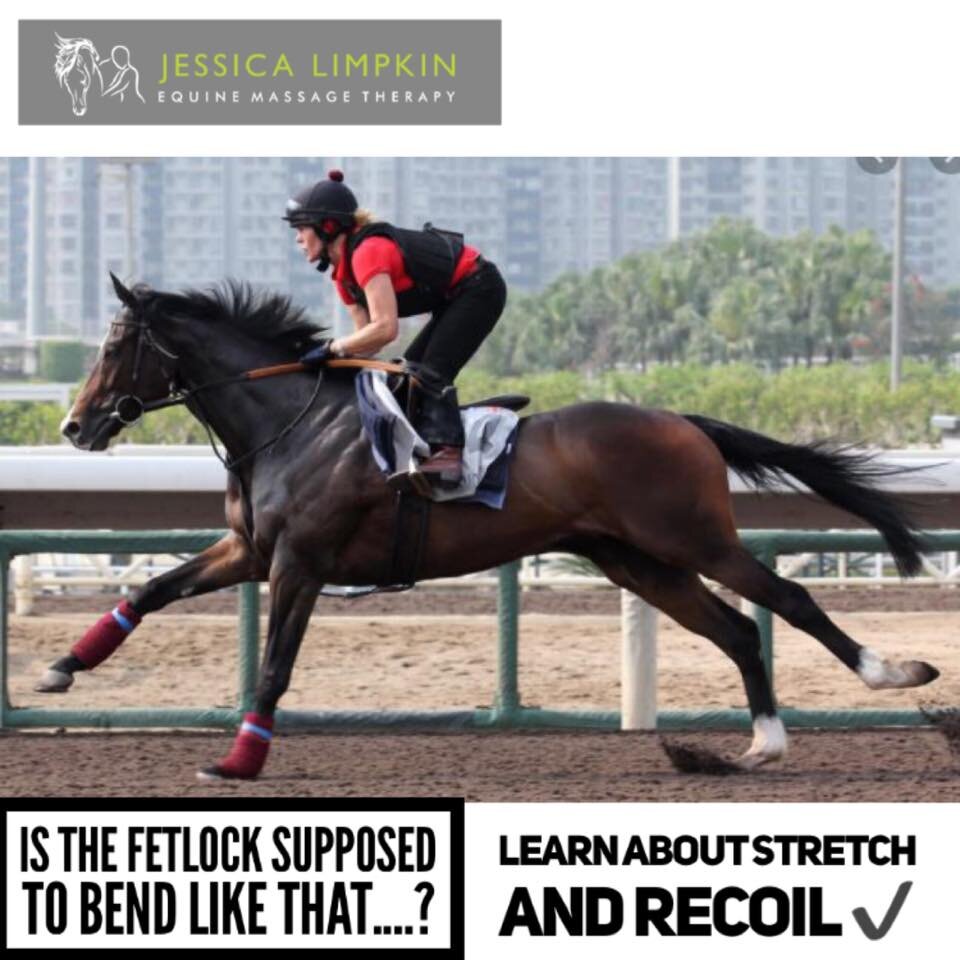Fetlock Extension in Horses - The Stretch and Recoil System
One of my clients this week, who incidentally has been around horse for more than half a century, mentioned to me that for the first time when watching the horse racing, and thanks to the wonders of slow-mo, they had noticed that as the horses were galloping their fetlock joints were almost touching the floor 😳
This can also often be seen in horses landing from a jump, performing high level dressage movements, and in other disciplines and I assured her it was nothing to worry about – in fact, this is part of the design of the horse’s limbs to assist in locomotion/movement and is called ‘Stretch and recoil’ 😅
‼️Now, if you notice the fetlock dropping to the ground when the horse is in a gentle walk that would be a time to be concerned as the horse is likely to have a severe tendon or ligament injury and you should be straight on the phone to your vet‼️
❗️Your horse should also not be showing hypermobility of the fetlock joint in a working trot for example but I won’t get into hypermobility as this is a HUGE topic for debate in itself❗️
However, where the horse is performing either at speed, high collection or landing from a height this is perfectly normal and a very useful energy saving mechanism for your horse and I shall explain why...
Although it is commonly known that the horse has no muscle below the knee, the suspensory ligament does contain some residual muscle fibres along with collagen fibres and is known as a ‘yellow’ ligament 💛
This gives the ligament more ability to stretch than other more collagenous ‘white’ ligaments in the body 🤍
Working together with the superficial digital flexor tendon (often referred to as the SDFT) these structures support the fetlock joint and can absorb forces of up to 2.5 X the horse’s body weight upon the hoof landing 🐎
The tendon and ligament store this energy as they are stretched and then as the hoof begins to leave the ground the force is used to spring the structures back to their original length and to propel the horse forward 🏇
✅This is the stretch and recoil system✅
‼️It is worth noting that repetitive overload of the tendons and ligaments around the fetlock can lead to acute injury or degenerative damage over time‼️
▪️Galloping and jumping horses are more prone to tendon strain in the forelimbs
▪️Dressage horses are more prone to strain in the suspensory ligaments of the hind limbs
🔺But any horse is at risk to either🔺
This is why it is so important not to continually train our horses in the same movements day in and day out in order to give their tendons and ligaments a chance to rest and recover between sessions 😌
During an Equine Massage treatment I always spend time focusing on the lower limb to encourage blood flow to the area and stimulate the body’s natural healing and repair process ✔️
Jess | Jessica Limpkin Equine Massage Therapy
📸 Image rights - Thoroughbred News

